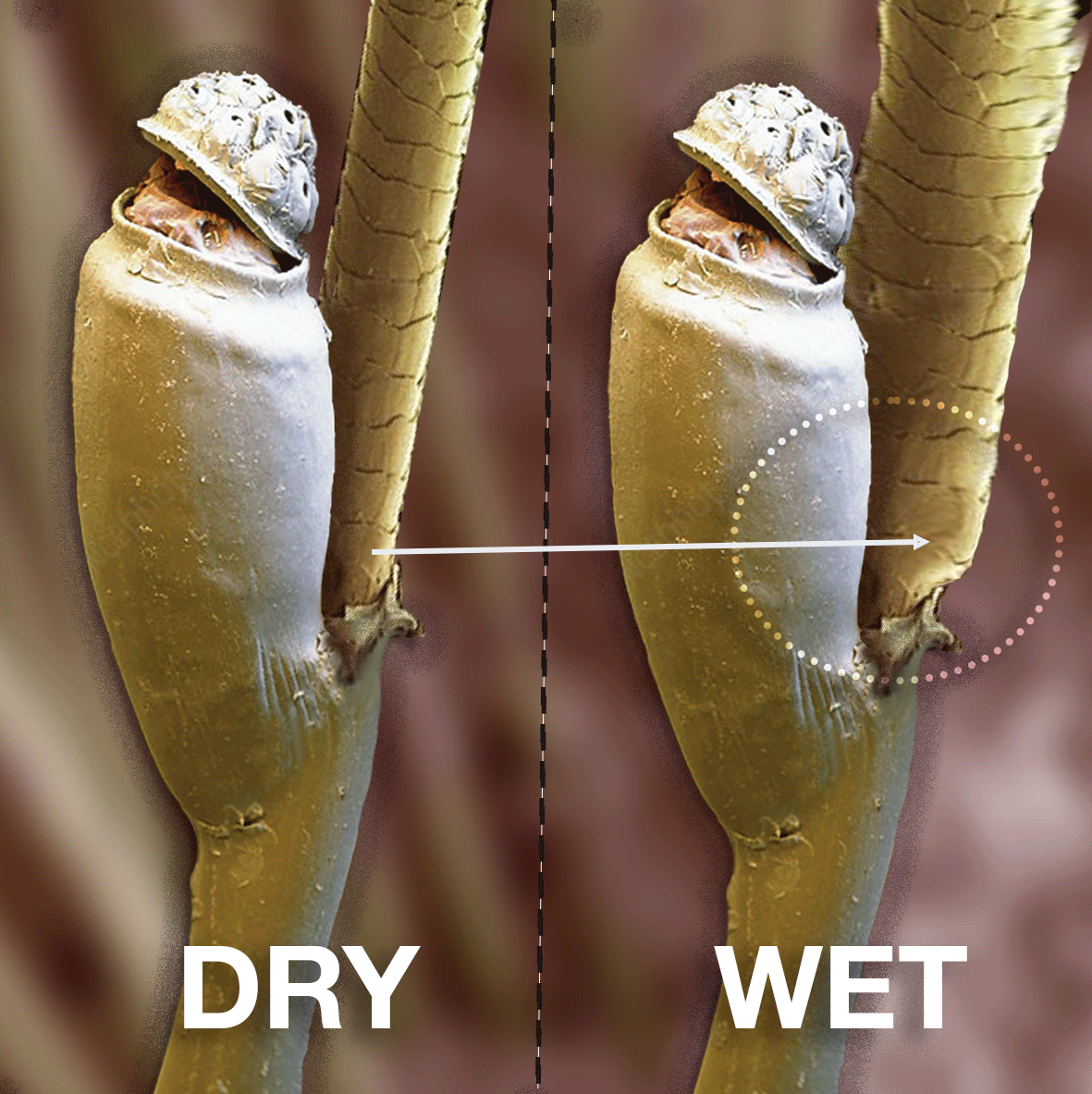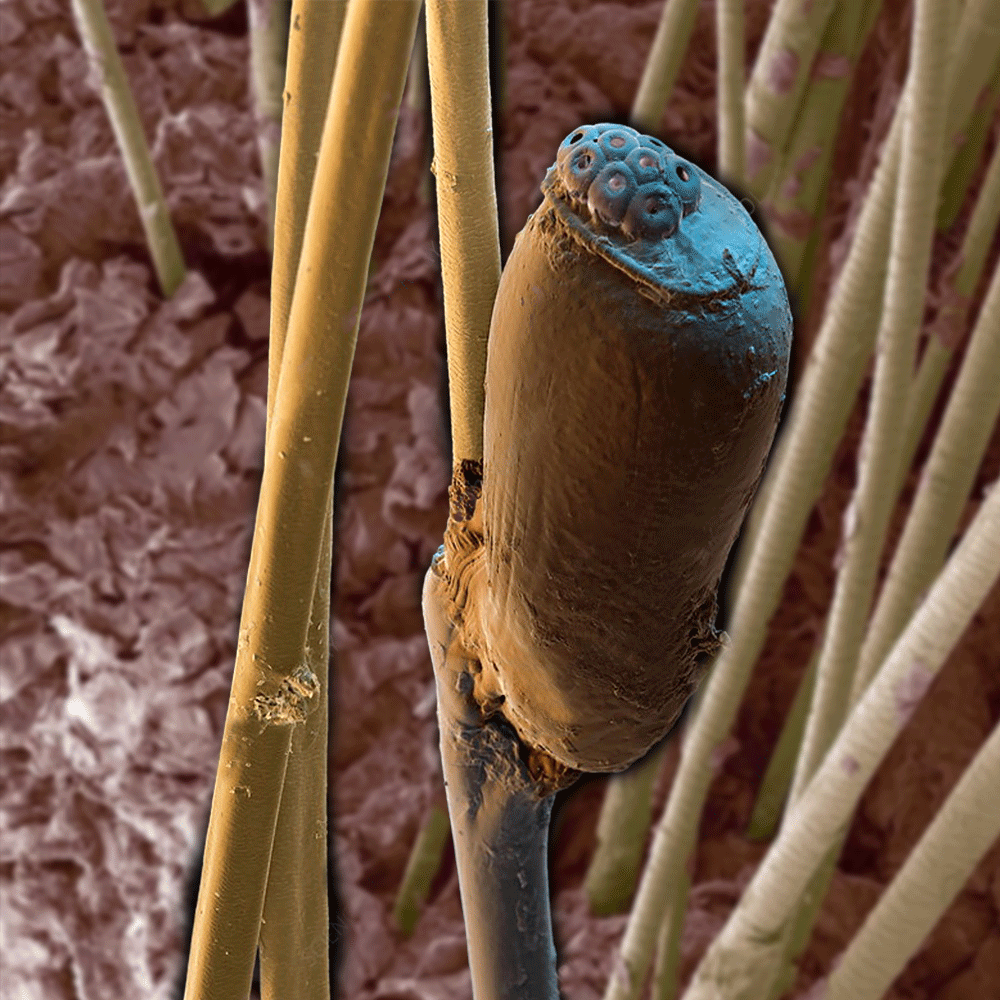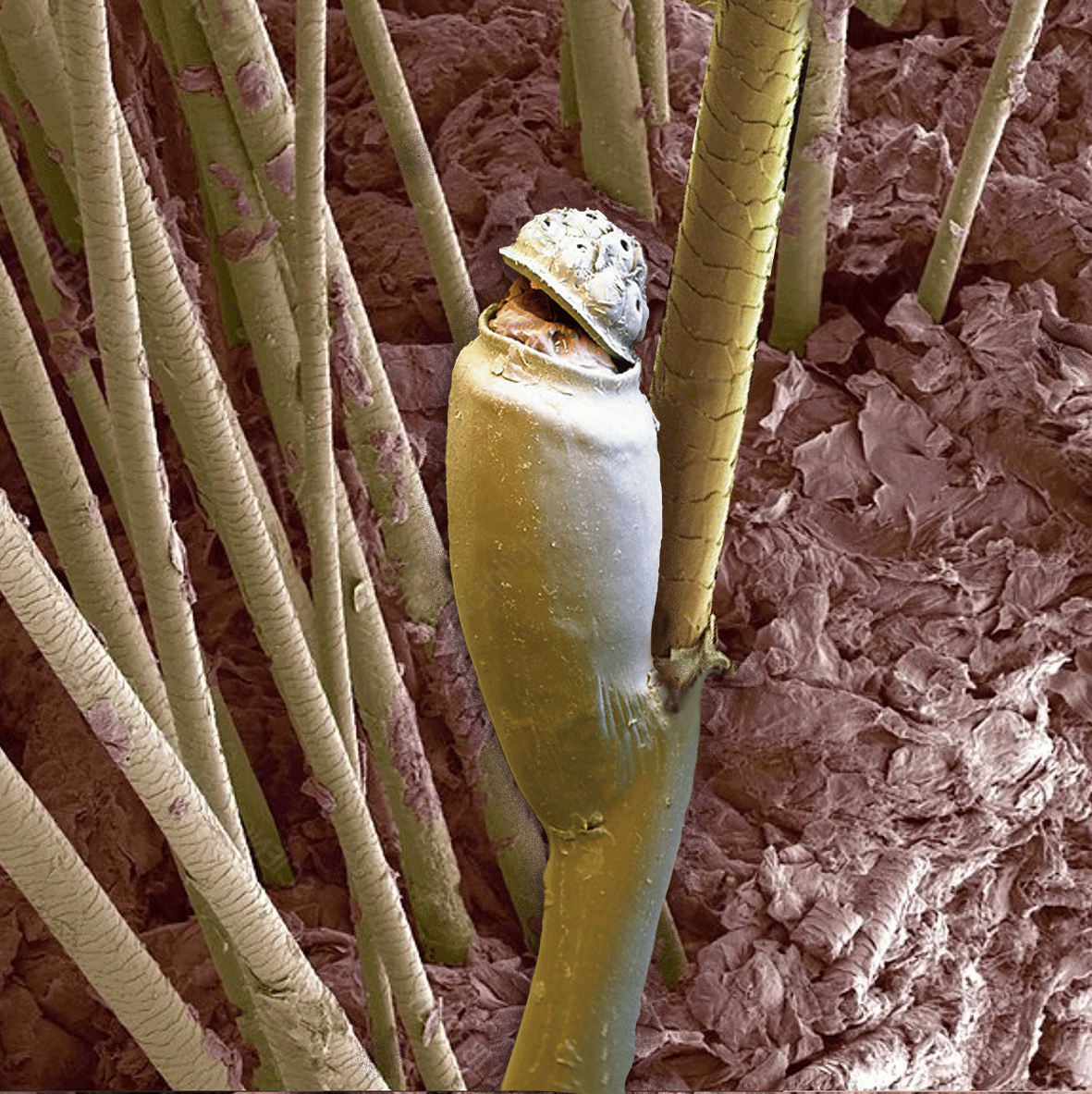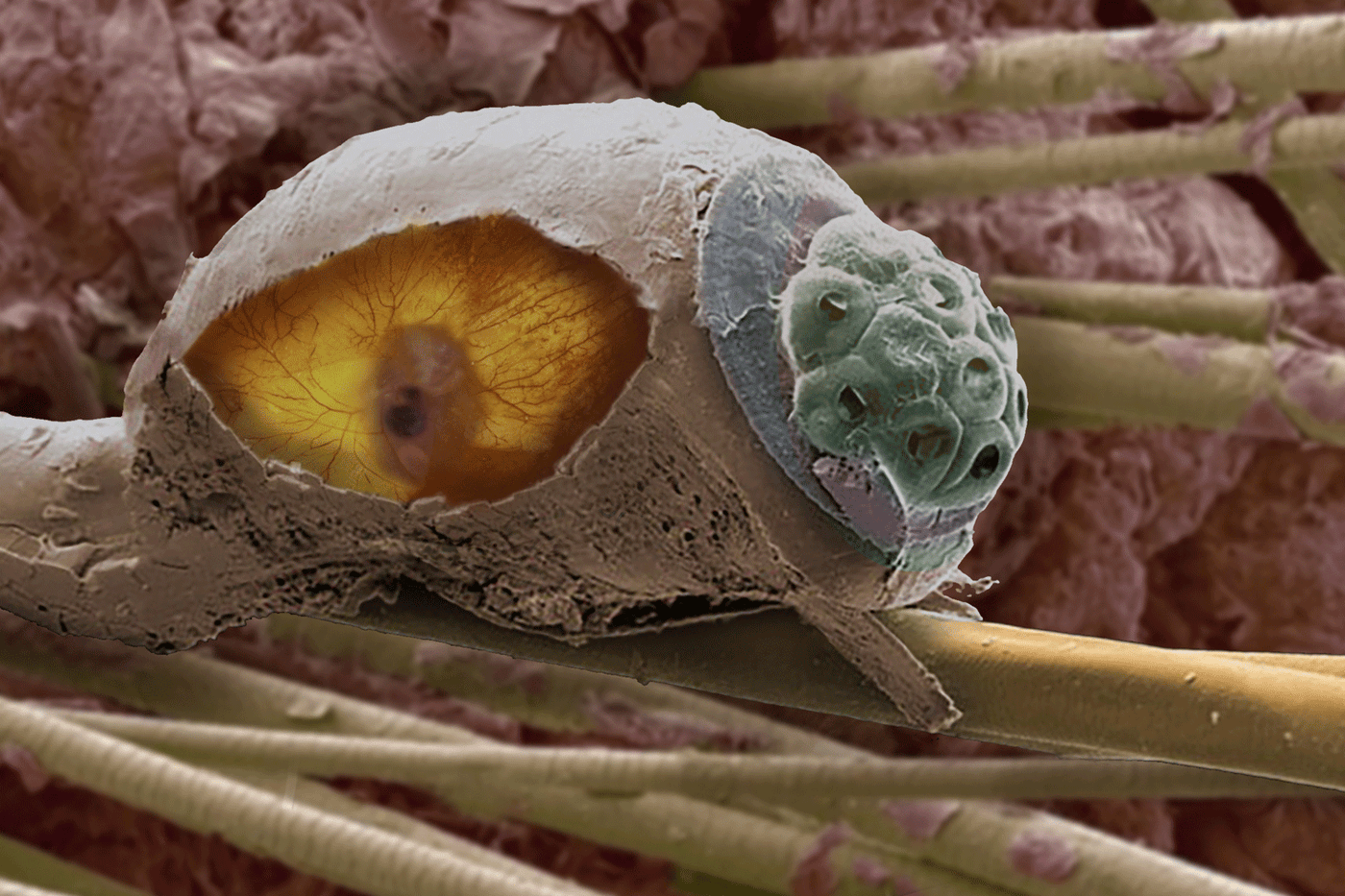Nit Eggs

IMPORTANT NOTE
Never use water based products when trying to remove nit eggs.
The nature of adhesive and the way it rings the hair shaft makes the nit eggs extremely difficult to remove if the hair is wet with water.
Water swells hair around 15% within 2.5 minutes thereby locking the adhesive very firmly in place. This means that dry nit picking is more successful than wet nit picking...
Water-based products (i.e. Hair Conditioner) will swell the hairshaft 15% in 2.5 minutes*, thereby locking the nit eggs firmly in place making it more difficult to remove lice eggs from the hair.
Oil-based products will not swell the hairshaft and will allow for effortless headlice egg removal. Only use oils to aid in the removal of lice and their nit eggs as oil is non-polar and will not swell the hair fibre.
Use Nit Ninja Nit-Picker Pre-Shampoo Combing Oil to remove live lice and thier nit eggs
*Source of Information - Human hair: A unique physicochemical composite - Leszek J. Wolfram, PhD - Stamford, Connecticut

Dark Eggs are live - Silver Eggs are empty shells.
Headlice eggs (nits) are a small, light-brown to greyish-white, oval shaped pod that are glued at an angle to the side of the hair shaft.
When the nit-egg are occupied by a louse they are darker in colour. Once the louse has hatched the nit-egg is a silver white colour... effectively the white nits are empty shells and the brow nits are still hosting a head louse.
Nits are glued tightly to the hair... and must be manually removed by using a fine-toothed comb or by pinching and dragging them with your fingernail tips.

Subheading
Breaking the Lifecycle
Freshly laid nit eggs will nearly always be within a few millimetres from the scalp as they need the heat of the body to incubate. In humid, warm climates lice will lay eggs all over the hair shaft, however in dry and cold climates they will lay almost entirely behind the ears and in the lower nape of a kids head.
If you find silver-white nits at a distance of greater than two centimetres from the scalp then they are very most likely to be old hatched shells. Although these old nit-shells do not pose a risk of headlice, they are unsightly and should be removed. As the glue used by headlice to stick nits to the hair almost always totally encircles the hair shaft like a wedding ring, it is important to slide the nit eggs upwards along the hair shaft in order to remove them.
Hatchlings are about 0.5mm in size and can grow up to 4mm in size. The hatchlings are extremely difficult to see with the naked eye, so if you spot a big headlouse in the hair, there is a strong chance she is an egg laying female. It is therefore very important to remove the larger lice from the hair as you remove the nits.

Lice Eggs
Incubation Period
The head louse develops inside the egg for 7 to 10 days in warm climates and up to 30 days in cooler climates. A breeding female louse will lay approximately 3-4 eggs per day for her normal breeding lifespan
of approximately 30 days. Therefore, one female could be responsible for producing more than 100 offspring.
Lice eggs need 35°C and 45% humidity to incubate their freshly laid nit eggs.
Freshly laid nit eggs will nearly always be within a few millimetres from the scalp as they need the heat of the body to incubate. In humid, warm climates lice will lay eggs all over the hair shaft, however in dry and cold climates they will lay almost entirely behind the ears and in the lower nape of a kids head.